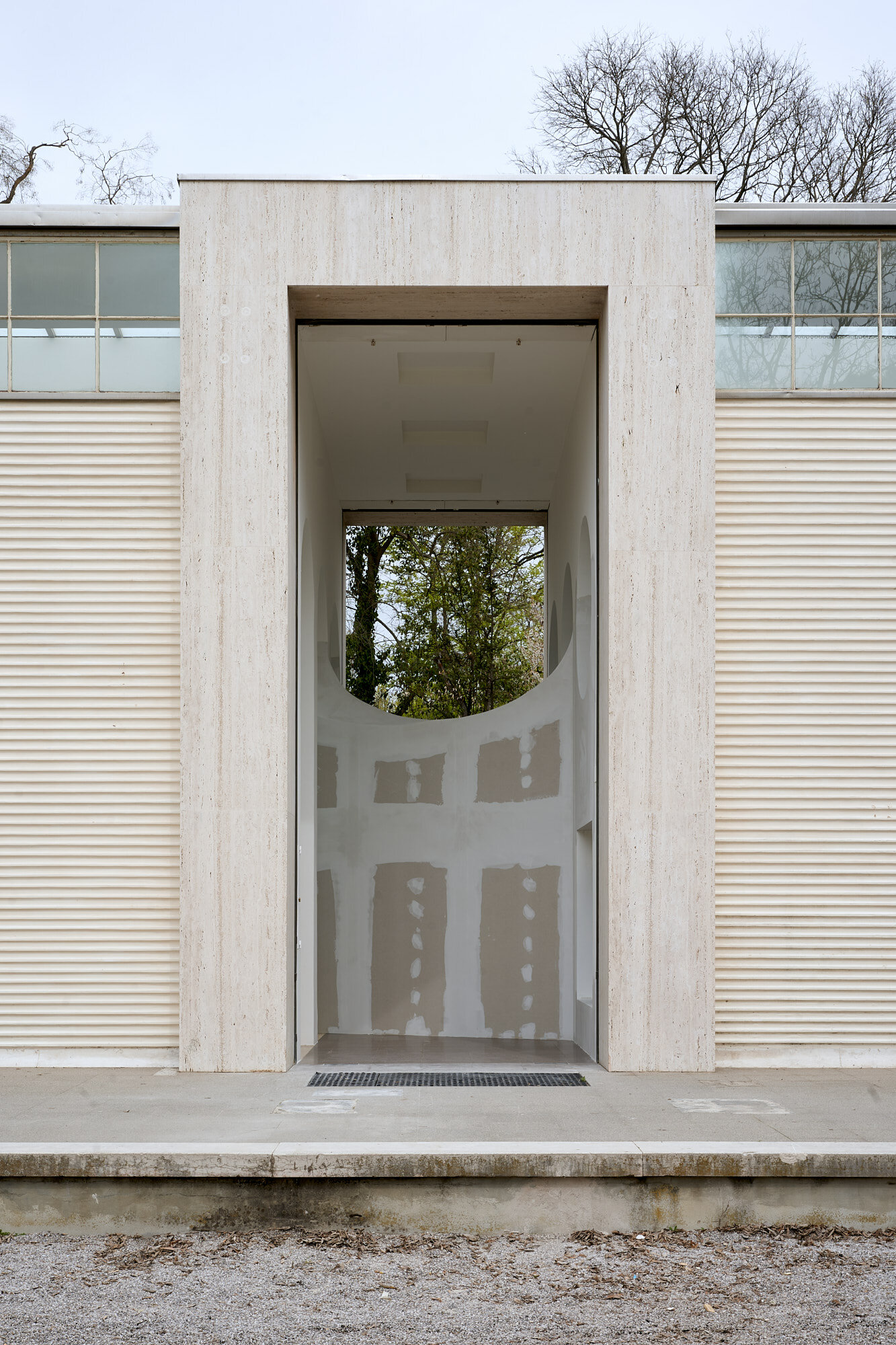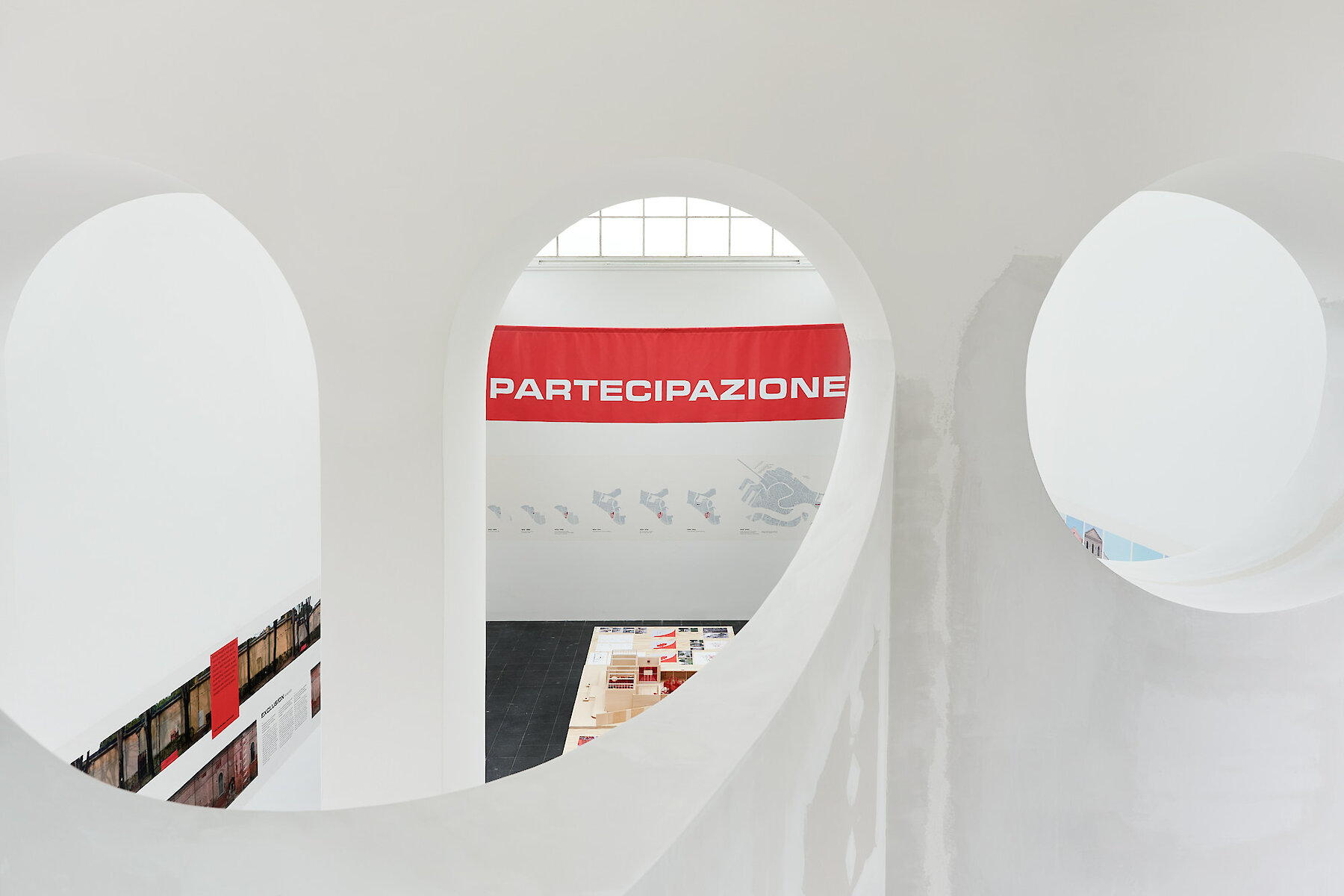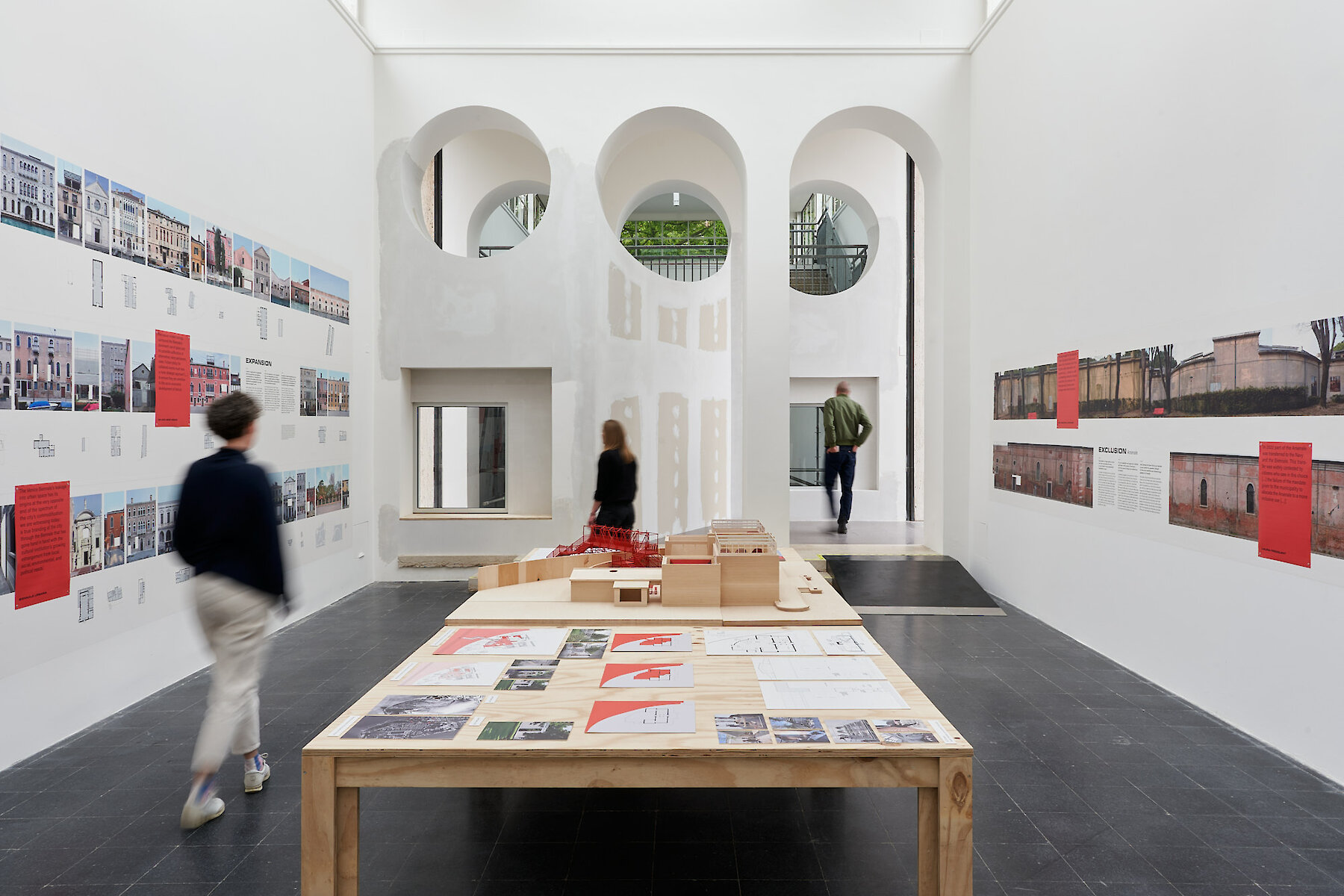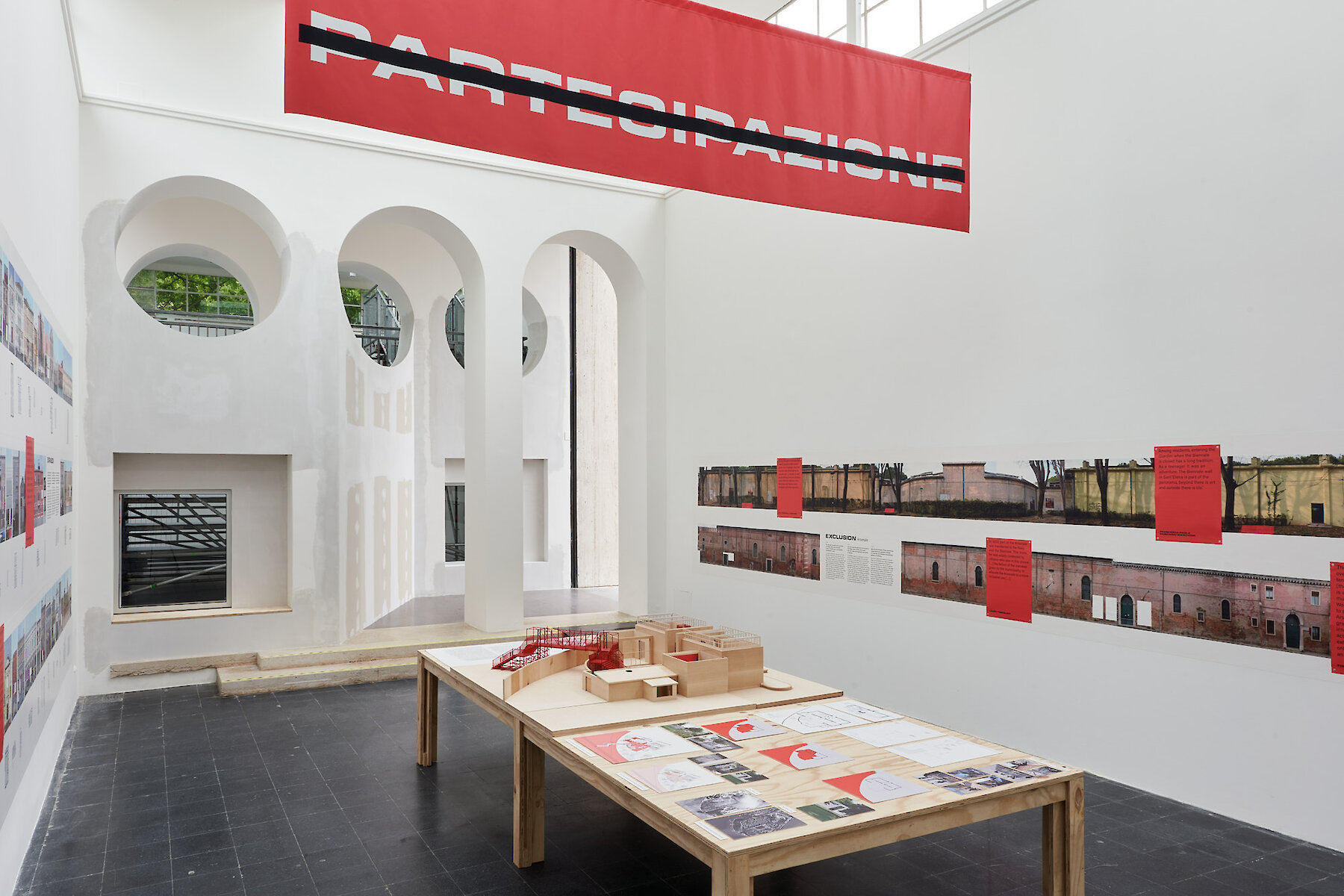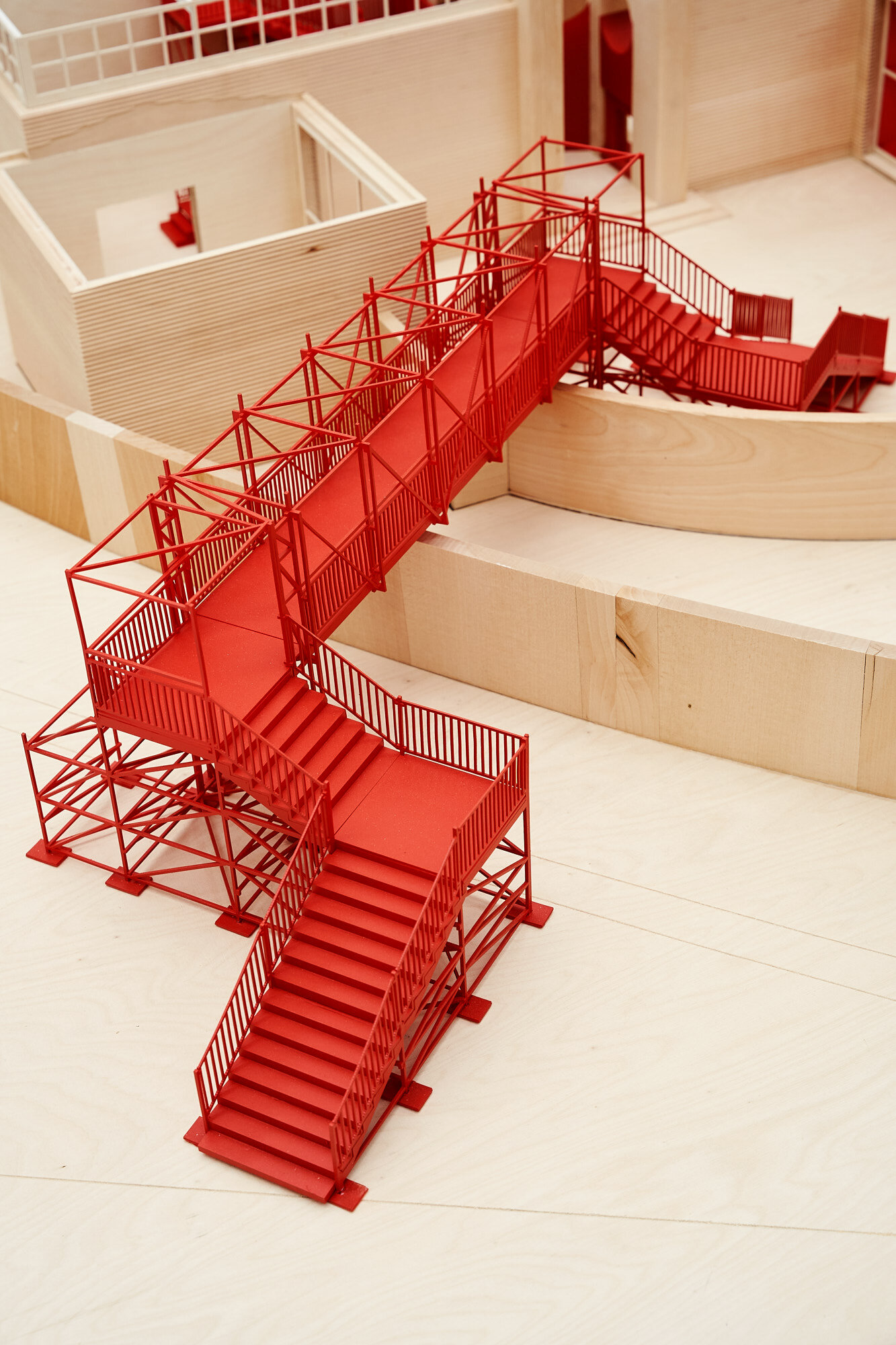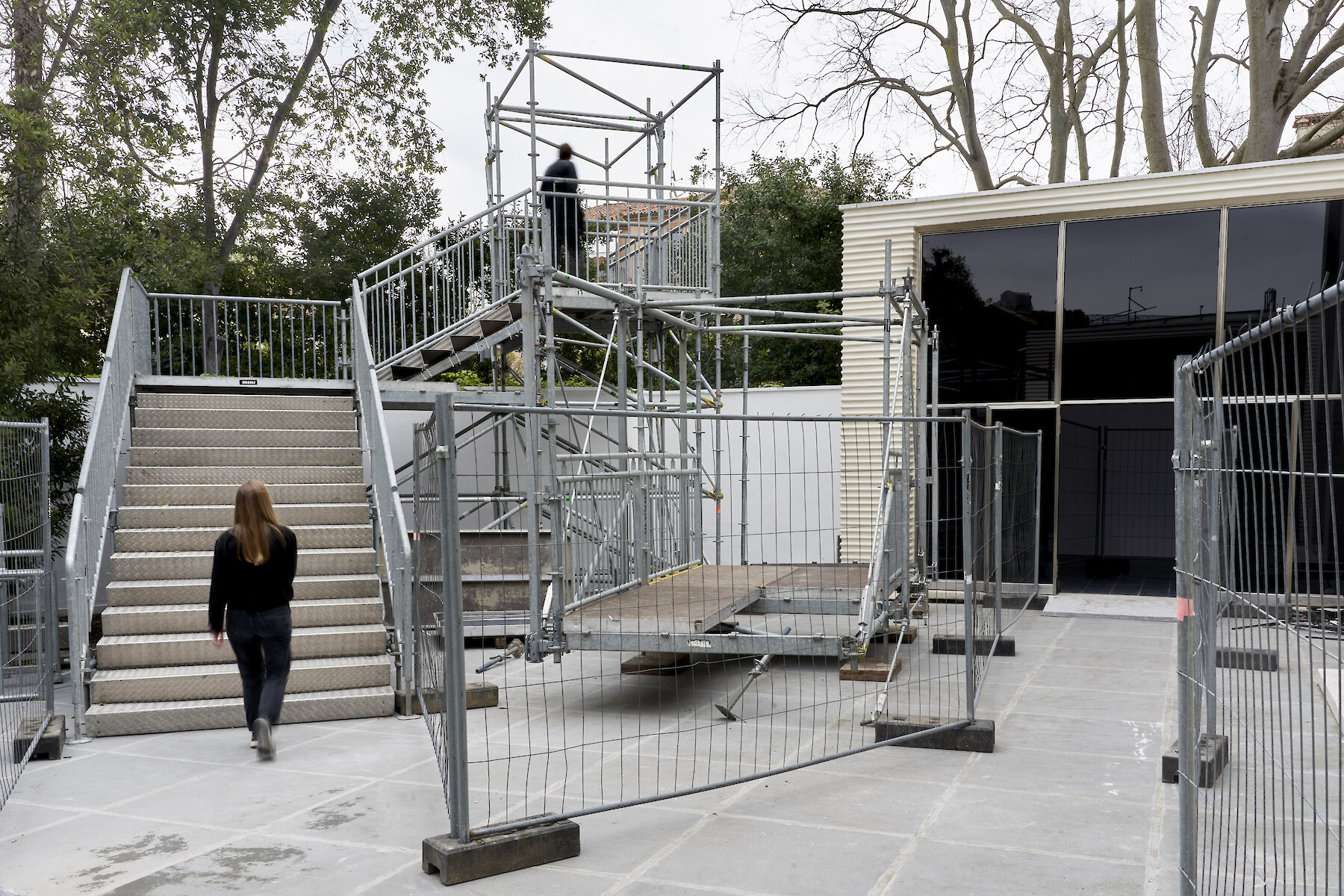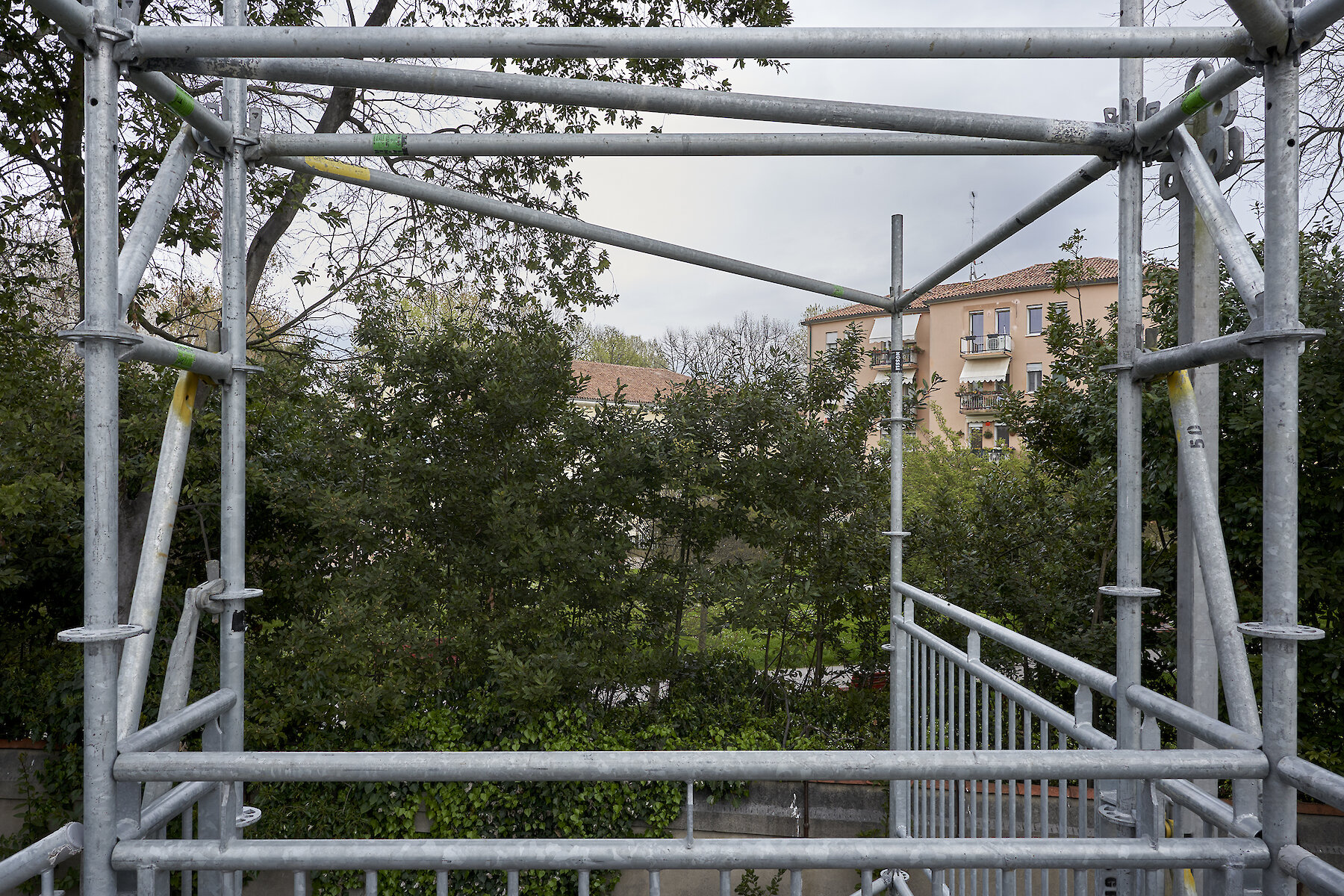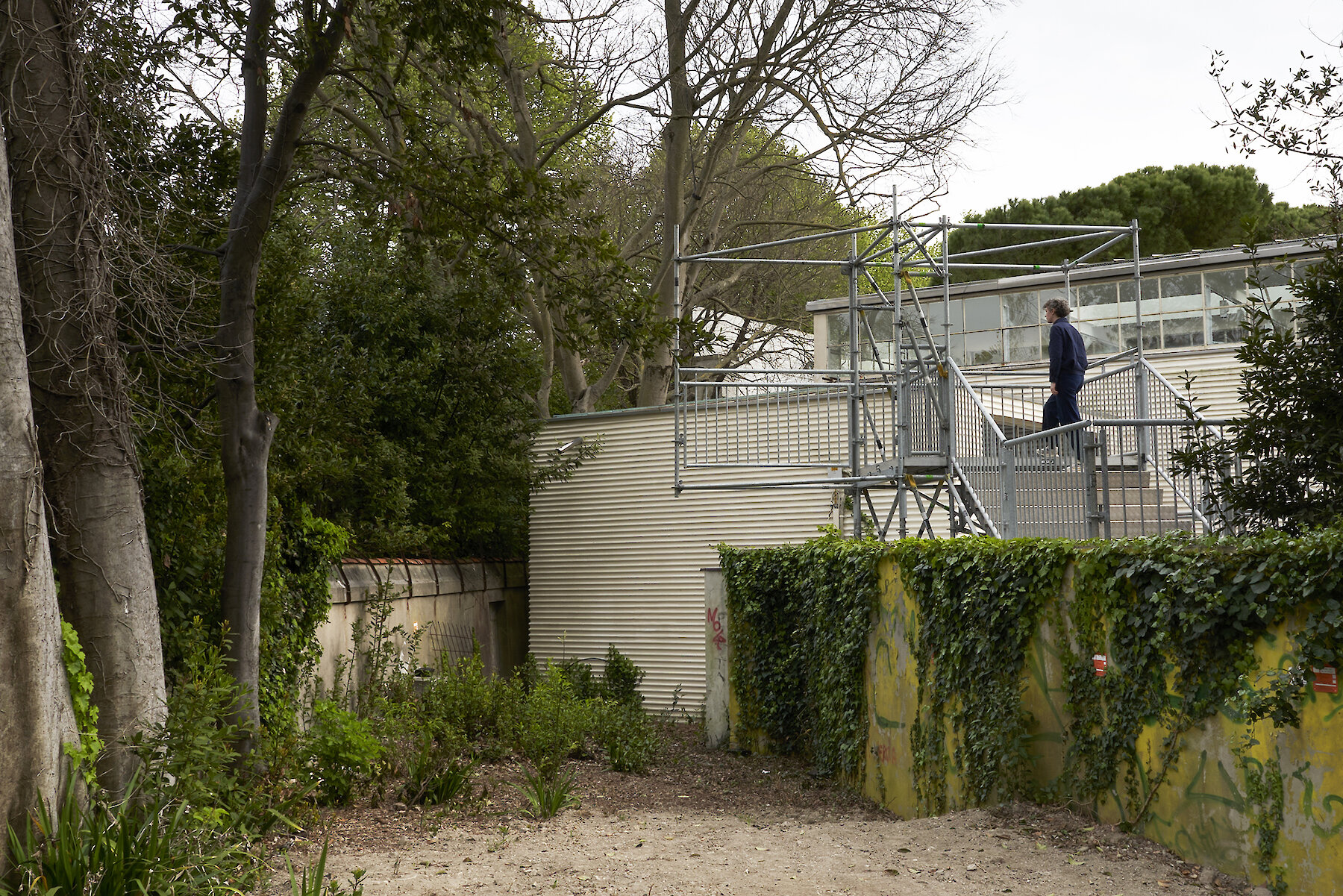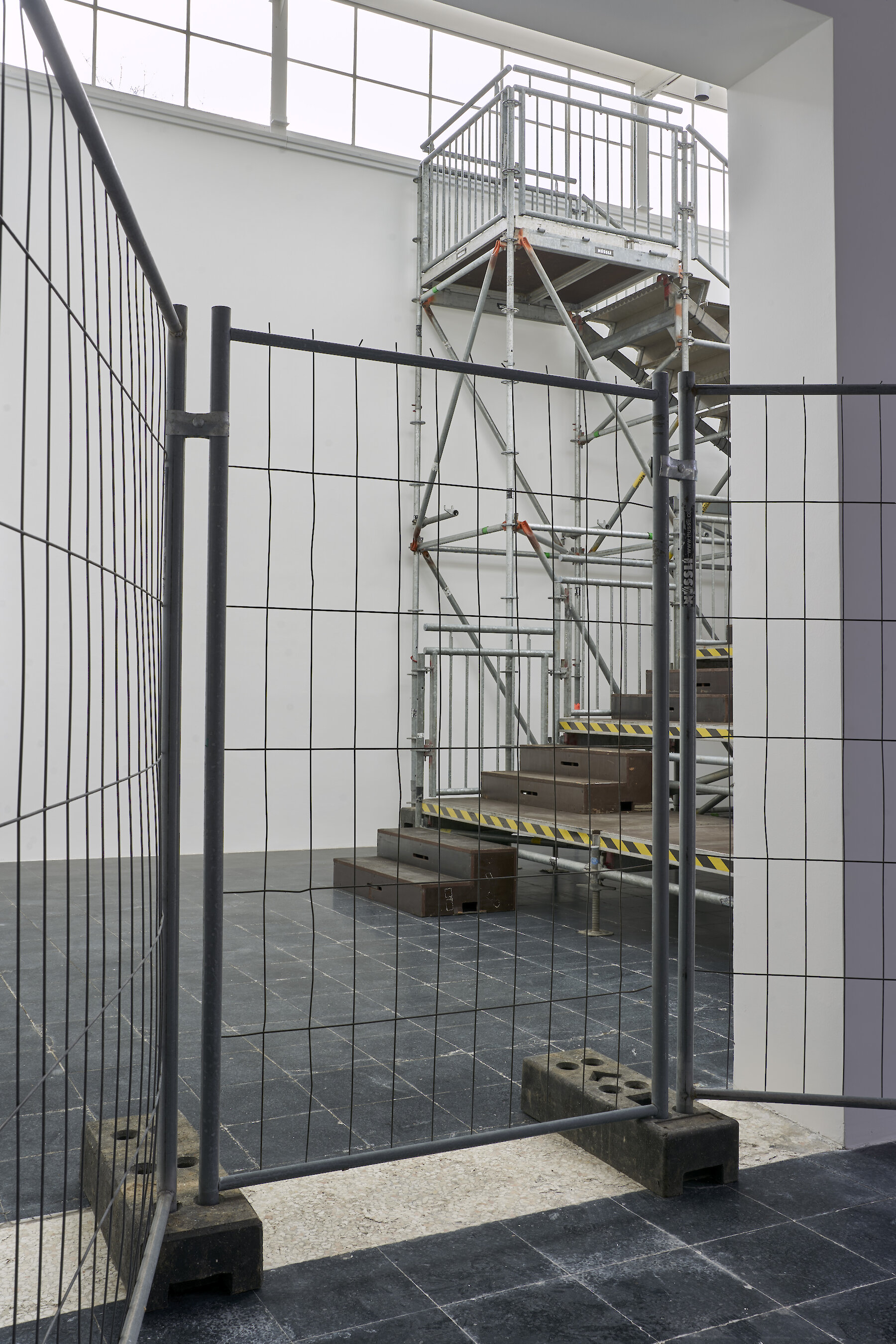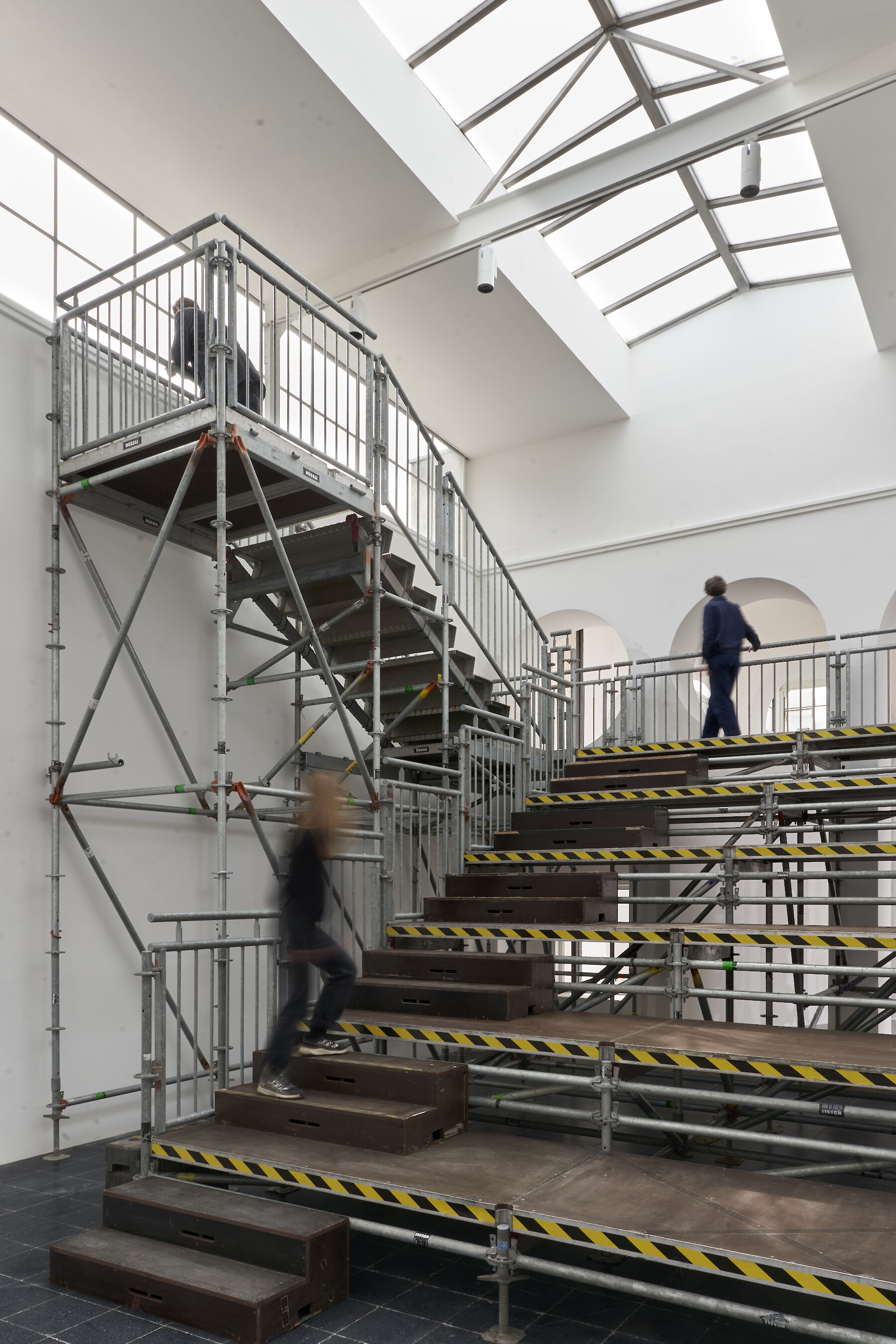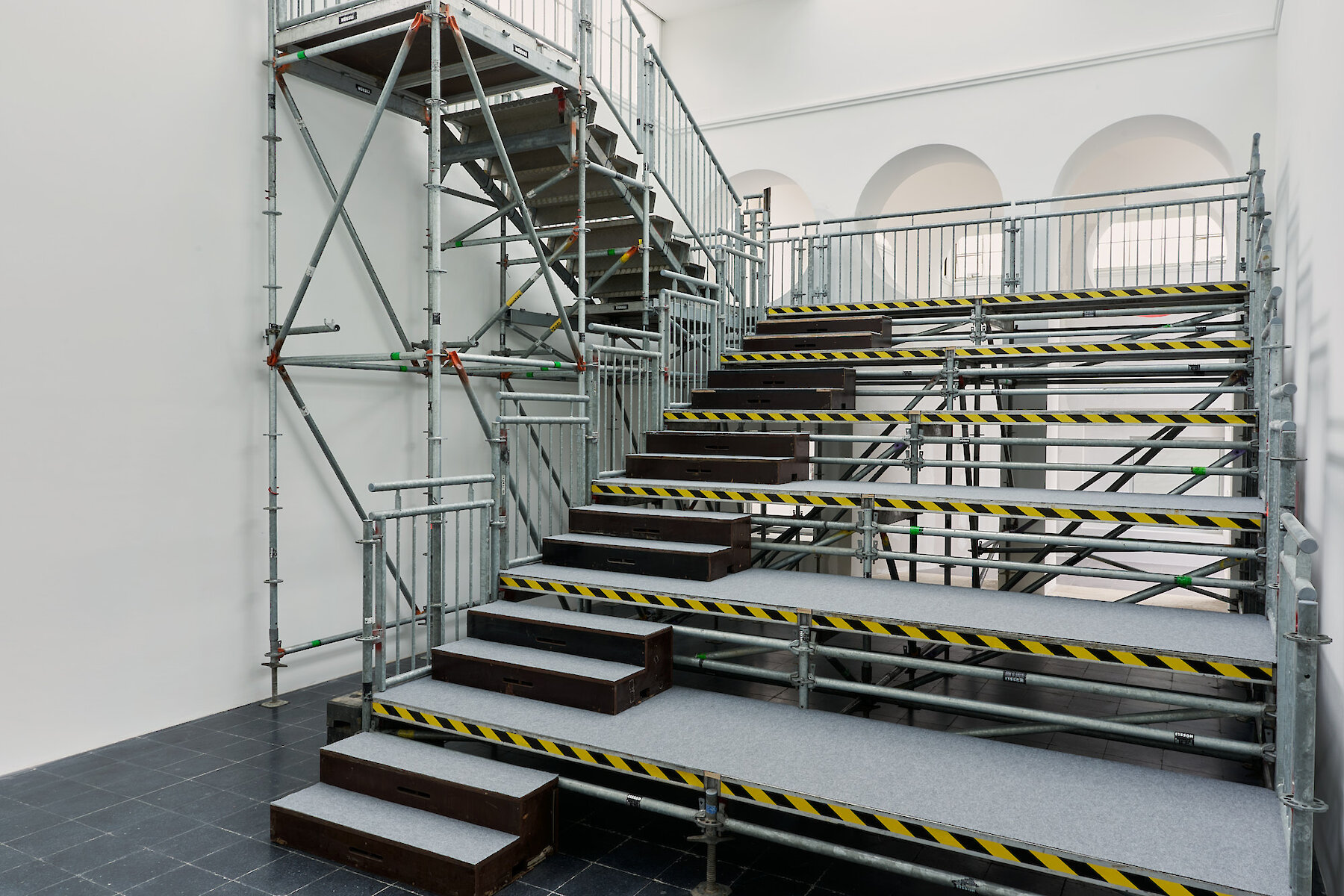Exhibition
Participation
Under the title of ‘Partecipazione / Beteiligung’, the Austrian Pavilion is to be divided, with one half of the building to be opened towards Sant’Elena on a temporary basis. This socially relevant transformation of the pavilion has been conceived as the Biennale’s turning towards the city: not in the form of further expansion as has happened over the past decades, but as a reversal of its spatial practice, which in recent years has also been increasingly criticised by the international press. By the Biennale’s opening up to Sant’Elena, the population is o ered its share in a section of the Giardini, originally intended as a public area. Half of the Austrian Pavilion will become a freely accessible meeting place: an architectural invitation for the residents of Sant’Elena and Venetian initiatives to the Biennale to engage in a discussion about the relationship between one of the world’s most important cultural institutions and the city of Venice.
This project was rejected by the Biennale and the authorities involved.
The architectural intervention for the project was carried out, except for the connection and became the central exhibit of the exhibition as an inaccessible empty space. The half of the pavilion that is not accessible to the public will become visible to Biennale visitors as a missed opportunity for participation. The failure as well as its reasons will be documented and contextualized in the course of the exhibition. The political dimensions of the responsibility of cultural institutions will thus be presented to the international audience in an all the more vivid and urgent way.
What effect does architecture have, how do social conditions shift when building is carried out? This question is posed by the central exhibit of the exhibition, the dividing wall that separates the symmetrical pavilion between the main rooms.

Photo: Clelia Cadamuro
Exclusion Giardini
Step by step, the Biennale has expanded its premises within the formerly public area of the Giardini Pubblici since it has existed and consistently shielded them off towards the city. Since the area of the Biennale has been enclosed, there has been no spatial connection between the surrounding city and the exhibition. Despite repeated declarations of intent also coming from the City Council to reopen the Giardini all year round, they have remained an exclusive space for paying visitors and closed when no exhibitions are on. Even attempts undertaken by artists and architects to break up this separation within the framework of their contributions to the exhibition have always been declined.
Exclusion Arsenale
The Arsenale, its area covering almost one tenth of the entire old town, is one of Venice’s most controversial development zones. A complex ownership structure, with land divided between the state and the municipality, has contributed to the fact that an
overarching concept for its incorporation into the city has never come about. Restoration work conducted by the Monuments Office began with the first Architecture Biennale in 1980; since then, the Biennale has continuously expanded its space there. This exclusive use for paying cultural tourism has been criticised by numerous initiatives, which have called for a public passage through the Arsenale and its opening to the local population for years.
Expansion
In order to create space for associated exhibitions and those participating countries that do not have their own pavilions in the Giardini or the Arsenale, the Biennale has operated its own real estate exchange for years. While external events were initially housed primarily in palazzi, churches, and cultural institutions throughout the city, taking a closer look at the 2022 Art Biennale shows that the exhibition venues have long since encompassed Venice’s entire range of building types: former workshops, manufactories, stores, and even abandoned apartments have been given over to
the operation of the Biennale, illustrating a development that increasingly meets with criticism throughout the city.
Participants
In order for people to participate in or share the city, they must have a piece of the city at their disposal. The concept of participation therefore includes giving up space. As early as one and a half years ago, contact was made with the residents of Sant’Elena and Venetian right-to-the-city initiatives to prepare their temporary takeover of one half of the pavilion. A possible rejection of the project by the Biennale has been taken into account from the very beginning. A collaborative programme has thus been developed that demonstrates the lack of affordable private and public spaces in Venice and which will now be relocated to the precarious residual spaces of the
surrounding neighbourhood.
Rejection
The project for the Austrian Pavilion, selected by an international jury, was never supported or constructively discussed by the Biennale, despite several meetings with the local contact architect and its personal presentation by AKT & Hermann Czech in Venice. After an access through the wall had been rejected in preliminary negotiations, a bridge construction to Sant’Elena was submitted to the Biennale on 17 January 2023. Two months later, on 17 March 2023, the Biennale organised its ‘Conferenza dei Servizi’ with the authorities involved. On 6 April 2023, six weeks before the opening of the pavilion, the minutes of this meeting finally reached AKT & Hermann Czech.
